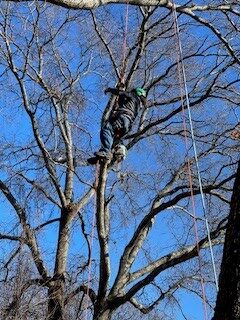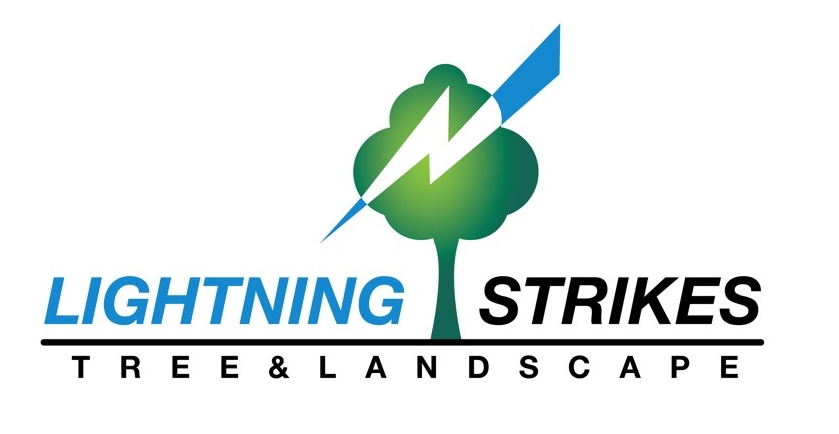-

A tree is one of the best things to have on your property; they clean the air, provide shade, provide a place for children to play and generally boost the value of your home. Residents of Plymouth are blessed to have trees lining the streets; however, they often have no idea when a tree is in need of the professional attention of an arborist.
Below are ten situations where you should call for the attention of an arborist from a tree service near you.
- ROUTINELY
Much like a human should routinely see a doctor for a medical check-up, a tree should also be assessed routinely by an arborist. Ideally, an local tree service should be called to check your tree at least twice in a year; this will help to diagnose an issue early enough before it can damage the tree permanently and need tree removal. An arborist will usually perform a risk assessment during these ‘check-ups’, checking for infestation, damaged trunks or roots and so on.
- WHEN A LARGE TREE NEEDS TO BE PRUNED
In Plymouth, large trees have been grown around the neighbourhood. Sometimes, these trees need to be pruned. A tree is pruned by trimming away overgrown branches or stems to encourage the growth of new ones and while smaller trees can be pruned by the owner with a saw, larger trees require an assessment by an arborist and even a professional tree trimming service. This will help to avoid potential hazards that a tree could cause such as injuries from fall or the saw and property damage.
PRESENCE OF CRACKS IN TRUNKS & BRANCHES
A little crack in tree trunks and branches is often harmless. In some cases, however, they could be a sign of a much bigger problem such as fungi infection, disease, insect infestation and so on. One way to verify whether or not a crack could be potentially dangerous is to place a pencil in the crack on your tree. If the crevice extends deeper than the bark of the tree then you may need to call an arborist as soon as possible. Most tree service companies have seen these issues and can mitigate any hazards they may come across.
PRESENCE OF A LEANING TREE
A leaning tree may be a sign of a bigger problem such as a dying tree or a decaying root. In trees like the oak tree, leaning may be harmless because the oak is usually strong enough structurally to withstand the weight of the lean. Nonetheless, it is important to reach out to a local tree service when a leaning tree is noticed. They with send an arborist to assess and decide if an emergency tree removal should be done or if all that is needed is a simple tree trimming of the canopy.
TO PROTECT TREE FROM LIGHTNING
Sometimes, trees get struck with lightning and this sometimes can start a fire, in order to avoid this, it is better to call an arborist beforehand. An arborist will perform a risk assessment to check whether your tree is at risk of getting stuck with lightning. If a tree is found to be at risk for this, the arborist would help you install a lightning protector.
PRESENCE OF A DECAYING ROOT
Most tree troubles start from the root. The root is important in helping the tree to draw nutrients and water from the ground, thus a decaying root could lead to wilting off of the whole tree. The good news is that in most cases a dying root can be saved and an emergency tree removal may not be needed. You, however, need to reach out to an arborist as soon as you notice a decaying or dying root because a tree with a decaying root is at risk of collapsing.
PRESENCE OF DEAD BRANCHES ON A TREE
After the winter season, most branches get weakened and can sometimes die. For smaller trees, a dead branch can be cut off from the tree easily by the property owner; larger trees however require professional help. An arborist will assess such tree to be sure of which branches need to be trimmed or if the whole tree has been affected already. In such cases, an emergency tree removal will be done.
- WHEN PLANTING A NEW TREE
A tree is a good investment and thus a lot of property owners in Plymouth tend to plant trees on their properties by themselves, this may, however, be dangerous. Getting professional help when planting a tree is important as an arborist will be able to tell you the best spots for planting a tree depending on the type of tree you want to plant. The arborist will also give instructions on how best to take care of your tree to maximize its benefits and ensure a longer life span. Generally, reaching out to an arborist before planting a tree ensures that you begin on the right foot.
PRESENCE OF MULTIPLE TRUNKS
While a lot of property owners believe that it is normal for trees to have multiple trunks, it is not and could be potentially dangerous. A tree with multiple trunks can split during a rain or wind storm and that could cause loss of lives, damage properties, cause injuries and it could also cost money and energy for a storm clean-up. Thus, when a tree with multiple trunks is noticed, it is best to call an arborist as soon as possible. The arborist will usually decide whether the whole tree needs to be removed, a trunk needs to be removed or the tree only requires trimming.
DURING AN INSECT INFESTATION
Insects could damage a tree, sometimes destroying it to a point where the tree will have to be removed completely. To avoid this, an arborist should be called to treat a tree when activities of insects are noticed. The arborist will also help to prevent such from happening in the nearest future.
No matter how good you believe to be with trees, there are times when your tree will require help from only experts. Avoid risking lives and properties and call an arborist when you notice any of these.
Are Trees Damaging Your Property?
Sometimes one bad tree can damage your entire landscape and even your home. Consult with our trained staff for a free assessment
Available 24/7 for Emergency Service
Did lightning strike? That’s our specialty. One call and we will dispatch our emergency response team to handle all your emergency tree service needs
Hours
Monday: 7:30am - 6:30pm
Tuesday: 7:30am - 6:30pm
Wednesday: 7:30am - 6:30pm
Thursday: 7:30am - 6:30pm
Friday: 7:30am - 6:30pm
Saturday: 7:30am - 6:30pm
Sunday: Closed
We Are Serving Plymouth, MA | Milton, MA | Canton, MA
Copyright © 2022 - Lighting Strikes Tree LLC. All Rights Reserved.

